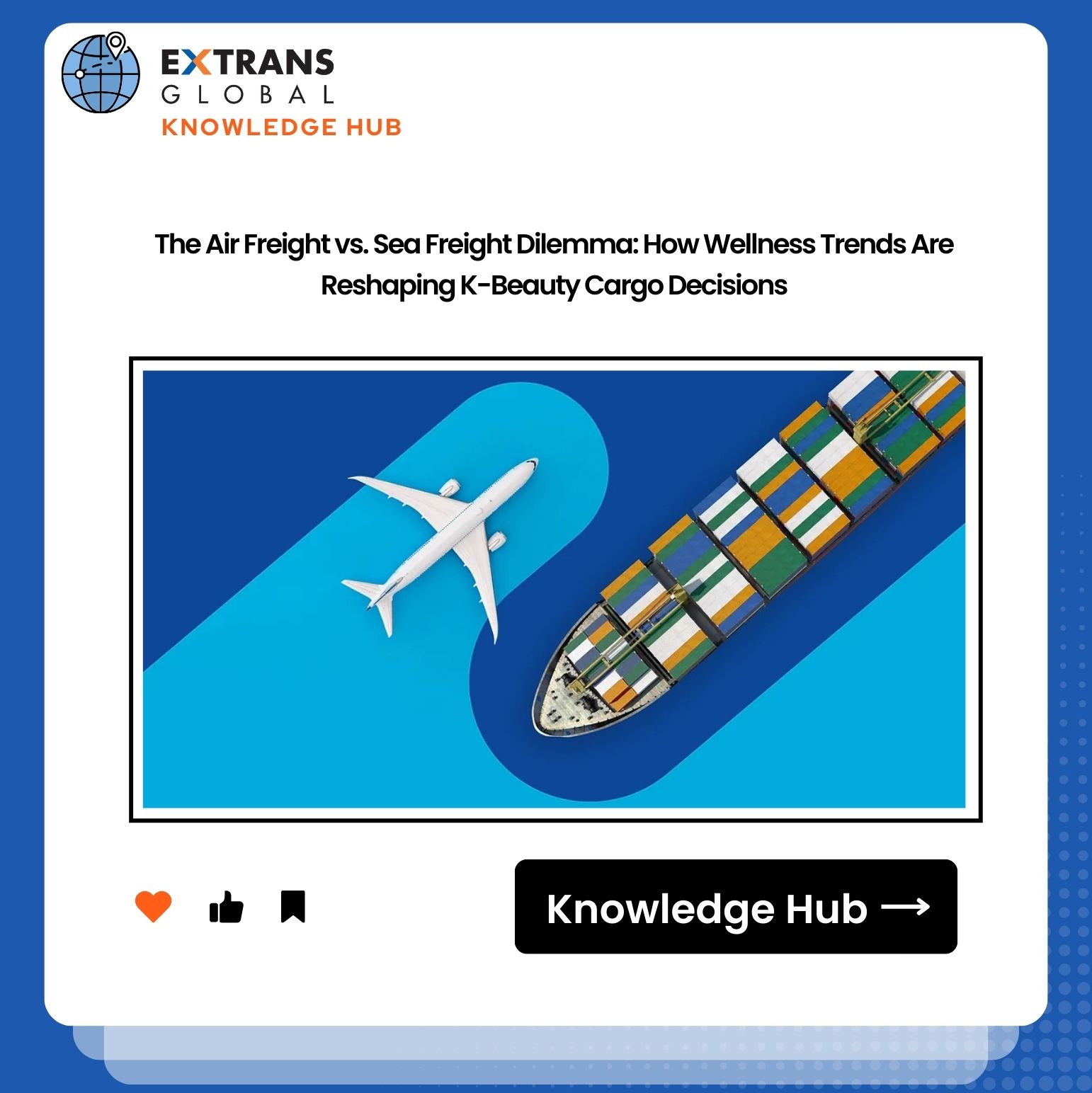The Air Freight vs. Sea Freight Dilemma: How Wellness Trends Are Reshaping K-Beauty Cargo Decisions
The Air Freight vs. Sea Freight Dilemma: How Wellness Trends Are Reshaping K-Beauty Cargo Decisions
The global K-beauty industry continues to boom, fueled by rising demand for innovative skincare and wellness products. However, as brands expand internationally, a critical logistics question arises: Should K-beauty companies prioritize air freight or sea freight for shipping their products?
With shifting consumer preferences toward sustainability, freshness, and speed, the choice between air and sea freight is no longer just about cost—it’s about aligning with wellness trends and customer expectations.
The Speed Factor: Air Freight’s Edge in Freshness & Trends
K-beauty thrives on fast-moving trends and perishable ingredients (like fermented essences and vitamin-rich formulations). Air freight offers:
✔ Faster delivery (1-5 days vs. 20-45 days for sea freight)
✔ Better for temperature-sensitive products (preventing spoilage)
✔ Ideal for limited-edition launches (meeting instant demand)
However, air freight is more expensive and has a higher carbon footprint, which clashes with the growing eco-conscious consumer base.
Sustainability & Cost Efficiency: The Case for Sea Freight
As wellness trends emphasize sustainability, many K-beauty brands are reconsidering sea freight due to:
✔ Lower shipping costs (up to 4-5x cheaper than air freight)
✔ Reduced carbon emissions (sea freight emits far less CO₂ per kg)
✔ Better for bulk shipments (ideal for established bestsellers)
Yet, longer transit times risk product expiration and delayed trend responsiveness.
How K-Beauty Brands Are Adapting
To balance speed, cost, and sustainability, leading K-beauty companies are adopting hybrid strategies:
-
Air Freight for New & Perishable Products – Ensuring freshness for serums, sheet masks, and trend-driven launches.
-
Sea Freight for Stable, High-Volume Items – Shipping toners, cleansers, and long-shelf-life products via ocean.
-
Eco-Friendly Packaging & Carbon Offsets – Mitigating environmental impact while maintaining fast delivery options.
The Future: Smart Logistics for a Wellness-Driven Market
As consumers demand both speed and sustainability, K-beauty brands must optimize their shipping strategies. AI-driven logistics, better inventory forecasting, and green shipping initiatives will play a key role in shaping the future of K-beauty cargo decisions.
Final Verdict: Which is Better for K-Beauty?
✅ Air Freight – Best for speed-sensitive, high-value, or perishable products.
✅ Sea Freight – Ideal for cost-effective, sustainable, and bulk shipments.
The winning strategy? A flexible, data-driven approach that aligns with both market trends and consumer values.

top




